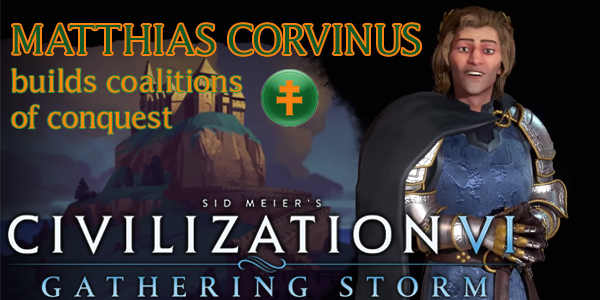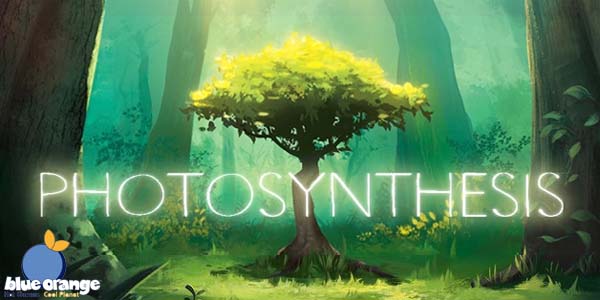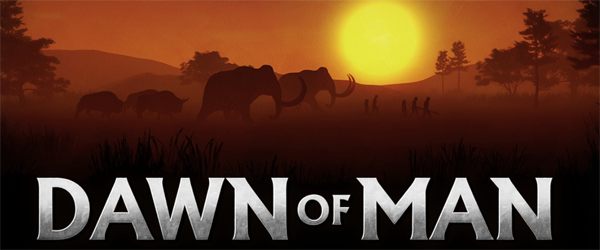
To Madden NFL 20's credit, this year's "demo" game actually does showcase some of the new features of the game. While you're waiting for the game to fully install, you can play the Pro Bowl this year. The Pro Bowl is one of the "new" features in this year's game, and playing this all-star game provides users with a prime opportunity to experience the game's other "new" feature, the Superstar X-Factors.
For some reason though, the game defaults to making the user play as the NFC. I'd much rather have been able to play as the AFC, with Patrick Mahomes as quarterback, so that the game could start off by letting me play a tutorial for the one and only new feature in Madden 20 that is actually new: the run-pass option. Instead, I have to play as Drew Brees, with no RPO tutorial or opportunity to hit the skill trainer, even though the play call screen keeps trying to get me to run the RPOs that I have no idea how to actually execute in the game.
The Pro Bowl demo showcases the new Superstar X-Factors.
So even though this demo Pro Bowl exposed me to new features, it was still a total crap-shoot of an introduction to this year's game. Without any tutorials, I ended up just having to play the game like last year's game and didn't get to actually enjoy any of the new content.
The impetus of Madden 20's design seems to be to bring back features and mechanics that were lost when Madden transitioned to newer consoles -- just in time for the end of this console generation, so they can get lost again! Almost every big new feature is a variation on some mechanic that existed in the game 10 or 15 years ago, even though EA's marketing team wants to insist that these are all new ideas.
Face of the Franchise feels like a re-imagining of the old Superstar mode,
and X-Factors feel like a re-branding of Madden 08's "weapons".
The Pro Bowl is a feature that existed on the PS2 / XBox versions of the game, but which was lost in the transition to the PS3 and XBox 360, was re-added to later PS3 and XBox 360 iterations, before being lost again in the translation to PS4 and XBox One.
The &Superstar X-Factors" are basically just the "Weapons" that were introduced in Madden 08.
The "Face of the Franchise" feature is a hybrid of the old Superstar mode and the more recent Longshot mode.
And so on...
The Pro Bowl was playable in previous generations.
Did anyone even really care that much about getting the Pro Bowl back? I understand wanting the pre-season in the game, there's team-building strategy that goes into preseason, so that has value in the video game. But the Pro Bowl? Heck, I don't even think the player gain experience points from playing in the Pro Bowl, so the game is just as pointless in Madden as it is in real life!That's why the NFL had to move it to before the SuperBowl -- because nobody would watch it. And it's also why they had to relocate it out of Hawai'i -- because anybody who could afford to fly to Hawai'i to watch it would rather just visit Hawai'i than attend the game.
Honestly, this is the sort of thing that I'd expect to be a footnote in the Franchise feature list that gets no fanfare whatsoever, compared to other sweeping changes that I expect to see. The fact that the return of the Pro Bowl is a headline feature just shows how little improvement this series sees from year-to-year.
... [More]
27af76b4-ae92-4344-a2da-658f0d814c79|1|1.0
Tags:Madden NFL, Madden NFL 20, Electronic Arts, EA Sports, Tiburon, football, franchise, Face of the Franchise, ultimate team, x-factor, coverage, huddle, no-huddle, two-minute drill, referees, glitch, eBay

Civilization VI's second expansion, Gathering Storm released earlier this year and has added a handful of new civilizations and leaders. I am hoping to write a strategy for each of them, but I want to start with the civilizations and leaders who are completely new to the franchise. This time, I'll be writing about the last of the truly new civs and leaders: the kingdom of Hungary, lead by the Raven King Matthias Corvinus.
Hungary is a modestly-sized country that lies along the dividing lines between central and eastern Europe, known for its vast geothermal water cave network. It reached its political and military height between the 14th and 15th centuries, when it became a major player in European politics and history. When the Ottomans invaded Europe in the mid-15th century, they set their eyes on securing a valuable border fortress at Belgrade. A noble from Transylvania, named John Hunyadi, levied a mercenary army to defend Belgrade from the Turks and hold back the Ottoman army from successfully gaining a foothold in mainland Europe.

The golden age of the Hungarian Kingdom concluded with the rule of the Raven King Matthias Corvinus, son of John Hunyadi. His election made him the first noble to ascend to the throne without a dynastic background. He was a patron of arts and education, and was seen as a protector of the common folk. His Bibliotheca Corvinian was the second largest library in all of Europe in the 15th century, second only to the Vatican Library. Matthias' mercenary Black Army fought off invasions from the Ottomans (possibly helping to protect all of Europe from Ottoman rule), and also conquered parts of Austria and Bohemia. When Matthias died without an heir, the country fell into decline.
DISCLAIMER:
Civilization VI is still a "living game". Strategies for the game (and for specific leaders and civs) may change as Firaxis applies balance patches, introduces new features, or expands the game through further DLC or expansion packs, or as the Civ community discovers new strategies or exploits. As such, the following strategy guide may change from time to time. I will try to keep it up-to-date, and will make notations whenever changes are made. I'll also post links in the official 2K forums and CivFanatics, where I'll also report any changes made. If possible and practical, I will try to retain the original content of the strategy for posterity.
I welcome any feedback or suggestions that readers wish to offer. Feel free to post on the linked forums, or by posting a comment at the bottom of the page.
This guide is up to date as of the release of the Gathering Storm expansion's "June 2019 update" (ver. 1.0.0.328)
Hungarian cities in Civilization VI do best when founded on snaky rivers and near geothermal fissures. They can be a military force to be reckoned with thanks to a pair of light cavalry unique units and a leader who can use levied city state units to crush his foes.
... [More]
a0bef8e7-e5fc-4a5a-a716-f599f93d6165|2|5.0
Tags:Sid Meier's Civilization, Civilization VI, Civilization VI: Gathering Storm, Hungary, Matthias Corvinus, pearl of the Danube, raven king, thermal bath, huszar, black army, horse, geothermal fissure, river, district, city state, levy

Blue Orange is a company that has released a series of very successful board games that are geared towards children, and which feature educational themes. My girlfriend and I came across some of their games in a kids' hobby store while on a family road trip last year. The game that stood out the most on the shelf was a new release called Photosynthesis, a game about players competing to grow a small forest. The box art and pictures on the back made the game look very pretty, and its educational theme about the life cycle of plants intrigued us. So we bought a copy and held onto it until our kid's birthday in the fall.
The game is recommended for ages eight and older, and is easy to dismiss as just a "kids' game", especially given its status as "edutainment". However, this game is more complicated than your standard kids' fare. There actually is some strategy involved, and the game runs for about 90-minutes. It's not a random dial-flicker or dice-roller like Chutes and Ladders, Candyland, or other such Milton Bradley / Hasbro / Parker Bros. games that make up a kid's board game shelf. It also has deeper strategy than the children's version of Carcassone (which our kid also has). This game (along with most of Blue Orange's catalog) is definitely geared towards family night, in which people of all ages are playing.
The game board is very pretty once multiple trees of different colors are placed.
A vibrant forest
This game's components certainly are pretty. The trees (and everything else) are simple cardboard cutouts, but they are printed on some thick and sturdy cardstock. Production quality is pretty high for a kid's game, and that high quality is always important when you're playing a game with kids, as it means the game will last longer before falling apart. All the colors are vibrant and attractive, and they all mix together very well when the trees are all clumped together on the board. I'm not particularly keen on the blue evergreens, which look very unnatural and kind of out of place. Maybe Blue Orange could have gone with more of a blue-green color? Or maybe red, as in "redwood"? Ah well, it's not a big deal. Maybe the blue trees are an homage to the company's name. The game looks very pretty, in any case.
The gameplay is pretty simple and elegant. Each turn, sunlight comes from a particular direction on the board, and any trees that are not blocked by an adjacent tree (e.g. the tree is not "in the shadow" of another tree) collects sunlight points for the owning player. Each player then spends their sunlight points to plant new seeds on the board, or to grow existing seeds into small trees, to grow an existing tree from small to medium or medium to large, or to let a large tree die. When a large tree dies, it creates new soil, which is awarded to the owning player as victory points. Trees in spaces further from the edges of the board score more points.
The sun moves across the board each turn, providing sunlight and shade to different trees.
Each round the sun moves around the board, casting different trees in the shadows of other trees. Medium and large trees also collect more sunlight, cast longer shadows, and can collect sunlight if partially-obstructed by smaller trees. So where you put the trees, and how tall you let them grow, will determine whether they will get sunlight, or if they will block other players' trees. You also have trade offs between planting more trees or growing your existing trees. Your own trees can also block your other trees, so you have to keep that in mind when you are placing or growing your trees.
... [More]
177b597b-f851-47a2-a7c2-d958179f018e|0|.0
Tags:Photosynthesis, Blue Orange Games, board game, edutainment, children, tree, plant, seed, sun, sunlight, Hjalmar Hach

There was a surprise indie hit on Steam a few months back. The prehistoric city-builder / management sim Dawn of Man saw lots of buzz around its release date and sold well beyond the developers' expectations. Did you buy it? Is it on your radar, but you haven't purchased it yet? Have no idea what Dawn of Man is? Well, it's a pretty good indie game that is well worth a look for those into city-builders and management sims. If you liked Banished (and you should have liked Banished if you played it), then I would say you owe it to yourself to give Dawn of Man a look.
I released an early version of this guide (in video form) to my Patreon backers.
Dawn of Man can be a difficult game to figure out, especially as you work your way into the middle sections of the game where the options available to you suddenly explode into a myriad of possibilities. Some of these difficulties can be traced back to the game having a sometimes-lackluster U.I. that makes some of the management more difficult than it needs to be. Other difficulties are simply things that you have to experiment with to figure out.
Well, I've done a bit of experimenting, and am happy to offer some of my observations. I hope these tips will help you to get into Dawn of Man with less of the headaches and growing pains that I experienced, so that you can get to enjoying this surprise indie hit more quickly.
... [More]
5097ffe0-fe80-44c3-8f07-9d90fba843e3|3|5.0
Tags:Dawn of Man, Madruga Games, indie gaming, prehistoric, strategy, city management, Steam, PC, hunting, work area, mammoth, technology, paleolithic, mesolithic, neolithic, copper age, bronze age, iron age, raider, YouTube

From what I've read, Madruga's indie management sim Dawn of Man has proven to be far more successful than the developers had ever imagined. The game made it onto Steam's top-sellers list the month that it released and was a surprise hit. I've actually had the game on my radar for quite some time. I saw a preview for it back in mid 2018 in a YouTube video about "upcoming strategy games for 2019". I watch those from time to time to see if any new games are coming out in the niche genres that I enjoy -- like city-builders, strategy games, and horror games.
My two favorite PC games are the Civilization games and city-builders like Cities: Skylines, so a management sim / city-builder set during the stone, bronze, and iron ages seemed right up my alley.
A prehistoric city-builder is an idea that is right up my alley!
Like any good management sim or city-builder, Dawn of Man has a "one-more-season" addictiveness that kept me playing into the wee hours of the morning trying to balance my food stockpiles and finish that next set of construction projects before saving and quitting. I'd tell myself that I'd play it for an hour or two, then switch to Sekiro, or work on a Civilization strategy guide, but five hours later, I'd be building palisades and watchtowers to protect my little neolithic farming village from plundering raiders, or sending an expedition halfway across the map to hunt one of the last few remaining wholly mammoths.
Learning by doing
You start the game as a small group of 7 paleolithic humans (half of which are children) living in a handful of animal skin tents. You hunt animals, gather sticks and stones, pick berries and nuts, craft simple tools, and eventually expand your handful of tents into a bronze or iron age city -- complete with walls and an army.
Your progress through the eras is governed by the accumulation of knowledge points. These knowledge points are gained by completing certain tasks or milestones within the game. Your people effectively learn by doing, and through repetition. Each "first" within the game will earn a knowledge point. Build your first hut: gain a knowledge point. Hunt your first deer: gain a knowledge point. Craft your first composite spear: gain a knowledge point. Plant your first crops: gain a knowledge point. And so on.
You accumulate knowledge points by
completing in-game tasks or milestones.
After that, you gain further knowledge points by repeating certain tasks or stockpiling certain resources. Crafting 10 bows will be another knowledge point. Drying and curing 100 units of meat would be another knowledge point. And so on.
You're constantly and gradually earning new knowledge. You can turn in lump sums of these knowledge points for new technologies in a technology tree.
I like this mechanism of "learning by doing". There is no place-it-and-forget-it "research" building or school that passively accumulates knowledge points like what you might see in other strategy games like Civilization. Learning is an active process for your little simulated people, even though most of your knowledge points will come from activities that are automated anyway.
... [More]
8bb5fcaa-40f9-429e-bb8c-c0e44b7d6529|2|5.0
Tags:Dawn of Man, Madruga Games, village, city, strategy, city simulation, city planner, prehistory, paleolithic, mesolithic, neolithic, copper age, bronze age, iron age, mammoth, hunting, gathering, indie gaming
|

| 12 | | | | | | | 60 | | 11 | | | | | | | 55 | | 10 | | | | | | | 50 | | 09 | | | | | | | 45 | | 08 | | | | | | | 40 | | 07 | | | | | | | 35 | | 06 | | | | | | | 30 | | 05 | | | | | | | 25 | | 04 | | | | | | | 20 | | 03 | | | | | | | 15 | | 02 | | | | | | | 10 | | 01 | | | | | | | 05 |
|